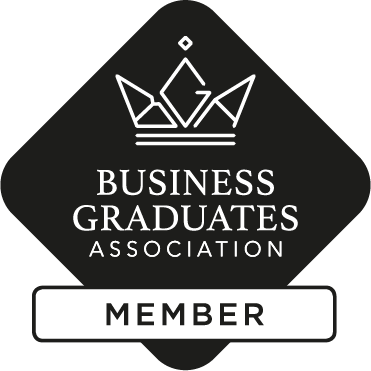University certificate
Scientific endorser

The world's largest school of business”
Introduction to the Program
With this 100% online Advanced master’s degree, you will manage the entire HR cycle and ensure that processes are aligned with organizational objectives”

Today, talent management has become a decisive factor for organizational success, and the recruitment process plays a crucial role in this management. Recruitment expertise within Human Resources not only allows to identify the right candidates, but also to optimize selection methods and create a positive experience for applicants. Therefore, professionals need to develop advanced skills ranging from the application of advanced technologies in recruitment to employer brand management.
In this context, TECH is launching a revolutionary Advanced master’s degree MBA in Human Resources, Recruitment Expert. Designed by leaders in this sector, the academic itinerary will delve into issues ranging from the dynamics of organizational behavior or the digital transformation of Human Resources to the design of diversity and equality programs. In this way, graduates will develop the necessary skills to strategically manage the recruitment and integration of talent in modern organizations, using digital tools and innovative approaches to optimize each phase of the selection process.
To consolidate such didactic content, professionals have an innovative methodology: Relearning. This TECH-driven system promotes the gradual assimilation of the most complex concepts through repetition, while minimizing the investment of time and effort in having to memorize them. Also, the program is developed 100% online, another significant advantage that provides autonomy to the graduates, allowing them to organize their learning pace depending on their other obligations. In addition, the curriculum includes comprehensive Masterclasses given by a renowned International Guest Director.
A prestigious International Guest Director will give rigorous Masterclasses to delve into the latest trends in Human Resources and Recruitment processes”
This Advanced master’s degree inMBA in Human Resources, Recruitment Expert, contains the most complete and up-to-date educational program on the market. Its most notable features are:
- The development of practical cases presented by experts in Human Resources, Recruitment Expert
- The graphic, schematic, and practical contents with which they are created, provide scientific and practical information on the disciplines that are essential for professional practice
- Practical exercises where self-assessment can be used to improve learning
- Special emphasis on innovative methodologies in Human Resources, Recruitment Expert
- Theoretical lessons, questions to the expert, debate forums on controversial topics, and individual reflection assignments
- Content that is accessible from any fixed or portable device with an Internet connection
You will gain a comprehensive understanding of labor and data protection regulations related to recruitment processes”
It includes in its teaching staff professionals belonging to the field of Human Resources, Recruitment Expert who pour into this program the experience of their work, in addition to recognized specialists from reference companies and prestigious universities.
The multimedia content, developed with the latest educational technology, will provide the professional with situated and contextual learning, i.e., a simulated environment that will provide an immersive learning experience designed to prepare for real-life situations.
This program is designed around Problem-Based Learning, whereby the student must try to solve the different professional practice situations that arise throughout the program. For this purpose, the professional will be assisted by an innovative interactive video system created by renowned and experienced experts.
You will have the best teaching staff and the most advanced didactic materials, so that the whole learning process is quick"

Thanks to the revolutionary Relearning methodology, you will integrate all the knowledge in an optimal way to successfully achieve the results you are looking for"
Why study at TECH?
Los directores de RR.HH encontrarán en este programa una oportunidad única para especializarse en el proceso de reclutamiento y ser capaces de seleccionar a los empleados más adecuados para cada puesto”
¿Por qué estudiar en TECH?
TECH es la mayor escuela de negocio 100% online del mundo. Se trata de una Escuela de Negocios de élite, con un modelo de máxima exigencia académica. Un centro de alto rendimiento internacional y de entrenamiento intensivo en habilidades directivas.
TECH es una universidad de vanguardia tecnológica, que pone todos sus recursos al alcance del alumno para ayudarlo a alcanzar el éxito empresarial”
En TECH Global University
|
|
Innovación |
La universidad ofrece un modelo de aprendizaje en línea que combina la última tecnología educativa con el máximo rigor pedagógico. Un método único con el mayor reconocimiento internacional que aportará las claves para que el alumno pueda desarrollarse en un mundo en constante cambio, donde la innovación debe ser la apuesta esencial de todo empresario.
“Caso de Éxito Microsoft Europa” por incorporar en nuestros programas el novedoso sistema de multivídeo interactivo.
|
|
Máxima exigencia |
El criterio de admisión de TECH no es económico. No se necesita realizar una gran inversión para estudiar en esta universidad. Eso sí, para titularse en TECH, se podrán a prueba los límites de inteligencia y capacidad del alumno. El listón académico de esta institución es muy alto...
95% de los alumnos de TECH finaliza sus estudios con éxito.
|
|
Networking |
En TECH participan profesionales de todos los países del mundo, de tal manera que el alumno podrá crear una gran red de contactos útil para su futuro.
+100.000 directivos capacitados cada año, +200 nacionalidades distintas.
|
|
Empowerment |
El alumno crecerá de la mano de las mejores empresas y de profesionales de gran prestigio e influencia. TECH ha desarrollado alianzas estratégicas y una valiosa red de contactos con los principales actores económicos de los 7 continentes.
+500 acuerdos de colaboración con las mejores empresas.
|
|
Talento |
Este programa es una propuesta única para sacar a la luz el talento del estudiante en el ámbito empresarial. Una oportunidad con la que podrá dar a conocer sus inquietudes y su visión de negocio.
TECH ayuda al alumno a enseñar al mundo su talento al finalizar este programa.
|
|
Contexto multicultural |
Estudiando en TECH el alumno podrá disfrutar de una experiencia única. Estudiará en un contexto multicultural. En un programa con visión global, gracias al cual podrá conocer la forma de trabajar en diferentes lugares del mundo, recopilando la información más novedosa y que mejor se adapta a su idea de negocio.
Los alumnos de TECH provienen de más de 200 nacionalidades.

|
|
Aprende con los mejores |
El equipo docente de TECH explica en las aulas lo que le ha llevado al éxito en sus empresas, trabajando desde un contexto real, vivo y dinámico. Docentes que se implican al máximo para ofrecer una especialización de calidad que permita al alumno avanzar en su carrera y lograr destacar en el ámbito empresarial.
Profesores de 20 nacionalidades diferentes.
TECH busca la excelencia y, para ello, cuenta con una serie de características que hacen de esta una universidad única:
|
|
Análisis |
En TECH se explora el lado crítico del alumno, su capacidad de cuestionarse las cosas, sus competencias en resolución de problemas y sus habilidades interpersonales.
|
|
Excelencia académica |
En TECH se pone al alcance del alumno la mejor metodología de aprendizaje online. La universidad combina el método Relearning (metodología de aprendizaje de posgrado con mejor valoración internacional), junto a los “case studies” de Harvard Business School. Tradición y vanguardia en un difícil equilibrio, y en el contexto del más exigente itinerario académico.
|
|
Economía de escala |
TECH es la universidad online más grande del mundo. Tiene un portfolio de más de 10.000 posgrados universitarios. Y en la nueva economía, volumen + tecnología = precio disruptivo. De esta manera, se asegura de que estudiar no resulte tan costoso como en otra universidad.
En TECH tendrás acceso a los estudios de casos de Harvard Business School”
Advanced Master's Degree MBA in Human Resources, Recruitment Expert
Without the appropriate selection of personnel and the correct administrative management, an organization would not be able to consolidate its short, medium and long term objectives. To achieve this, it is necessary to have the supervision of the HR specialist, in charge of selecting and hiring the most suitable profiles for the performance of each job. At TECH Global University we know the needs of the business environment, therefore, we designed the Advanced Master's Degree MBA in Human Resources, Recruitment Expert, with which you will learn the most relevant techniques in the area. The postgraduate course lasts two years, is taught online and has a highly prestigious faculty. Through our syllabus, you will explore everything from organizational behavior, strategic communication and talent management processes and finances, to corporate culture, work psychology and social security management (hiring, workers' rights). By specializing in these areas, you will be able to design innovative recruitment plans that promote the development and proper functioning of the organization.
Become an expert in HR and Recruitment
If you want to properly manage the processes of selection and recruitment of personnel, this postgraduate course from TECH is your best option. We will train you through state-of-the-art academic resources, which will improve your productive skills to become a highly qualified professional. To achieve this and more, you only need to enroll in this online program, taught by the best specialists in the sector. Through the curriculum, you will learn about the most fundamental topics, including executive coaching, the phases in the employee selection process, performance measurement, the legal regulations applicable to personnel management and the essential aspects of labor law. You will also learn about the transformation of human resources in the digital era and its influence on selection and recruitment processes. Finally, you will analyze the techniques of positive psychology to motivate employees, compensation policy, strategic management of equality-diversity and administrative processes in the area: hiring, dismissals, disability, staff restructuring and collective bargaining. After completing the program, you will understand the global perspective that governs HR.


















